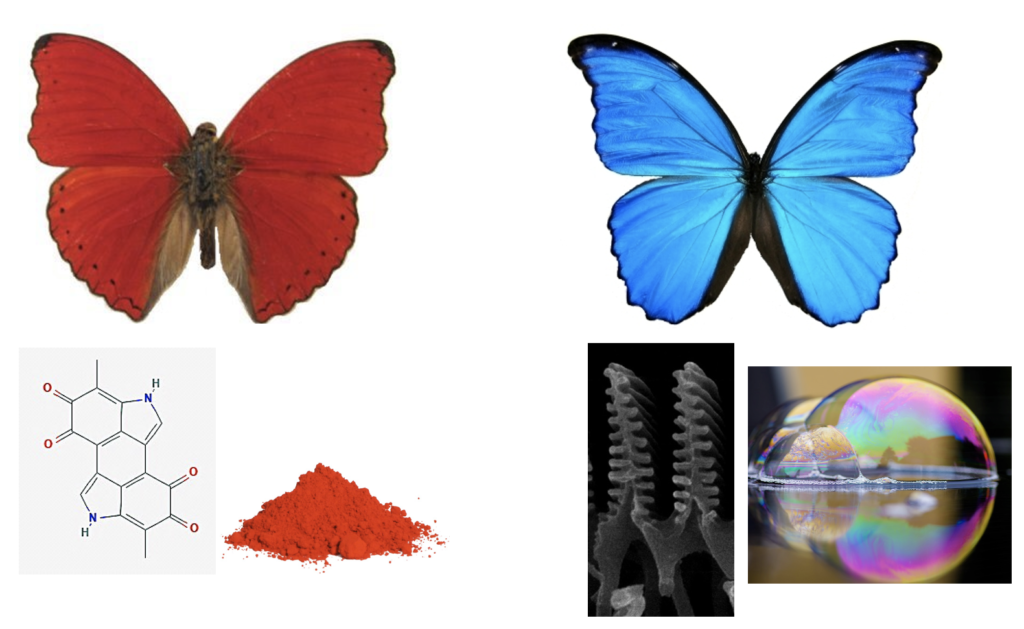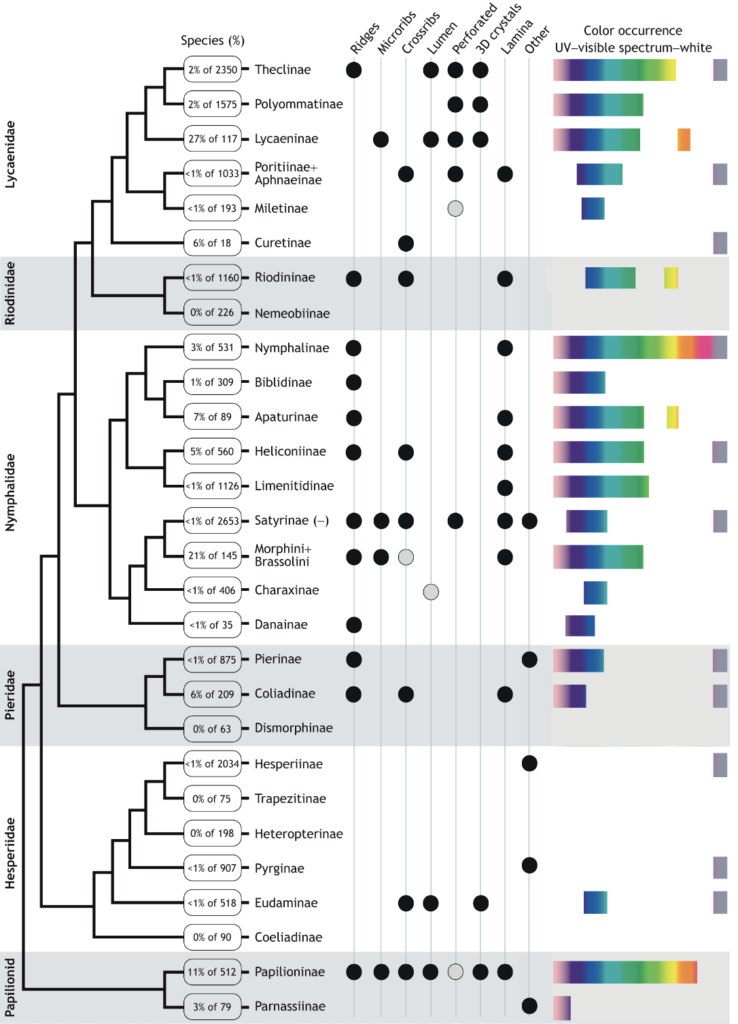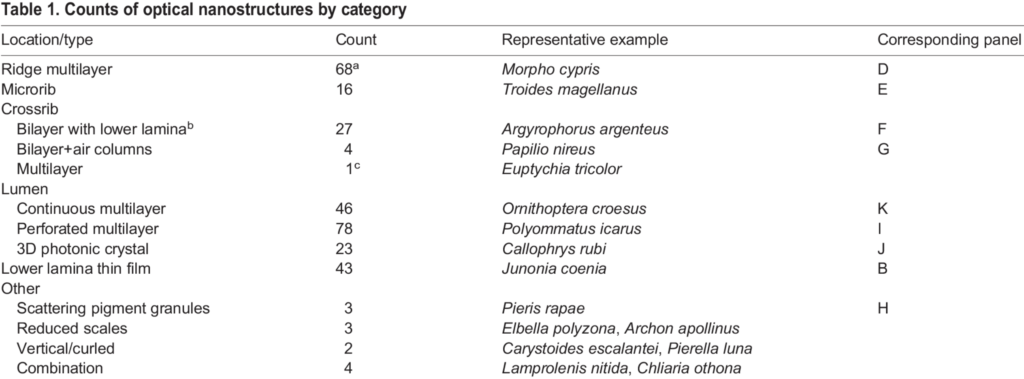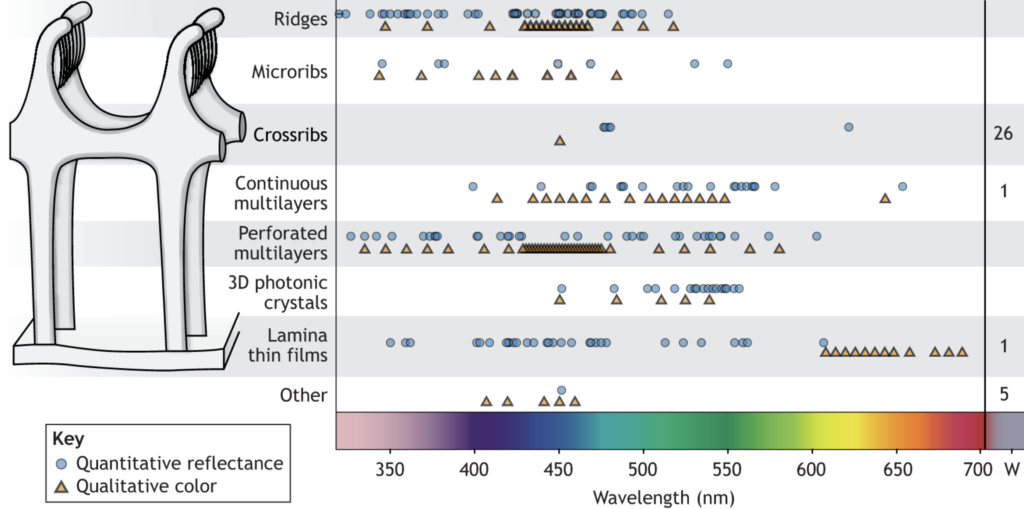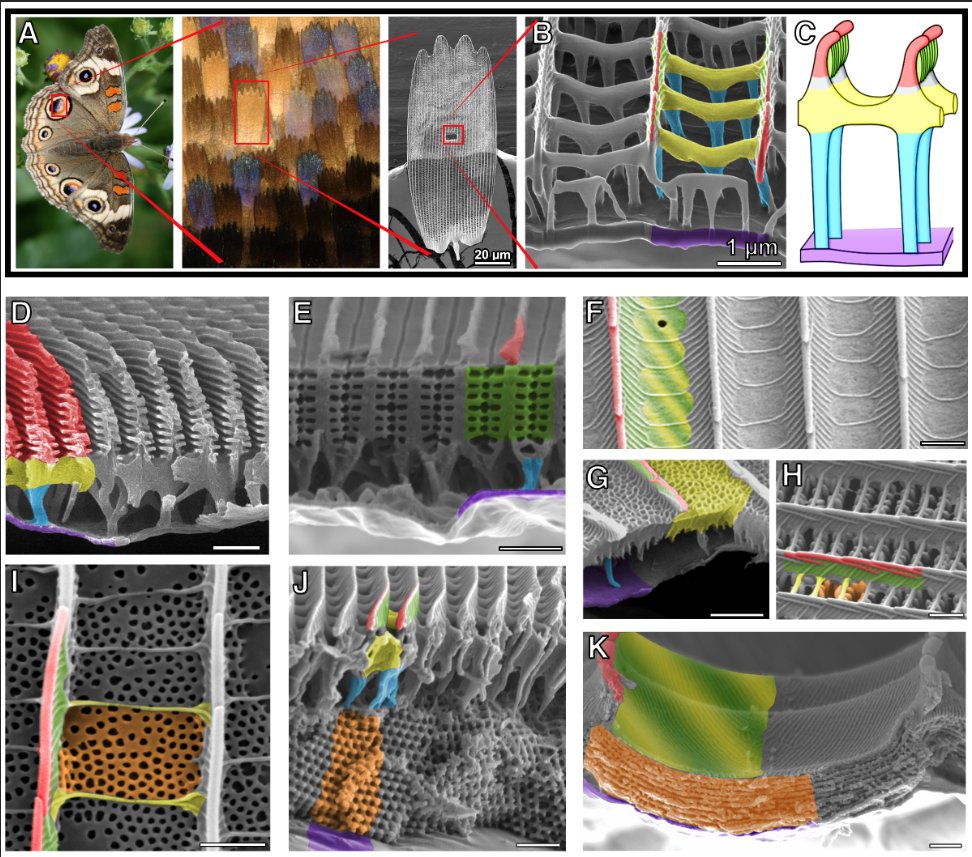A meta-analysis of butterfly structural colors: their color range, distribution, and biological production
Structural color–in which iridescent colors are produced by optical nanostructures rather than by color from chemical pigments–is common in butterfly wings.
As a pandemic project, Rachel compiled data for all documented butterfly structural colors that she could find: >300 nanostructures spanning a century of research. Rachel used this data to ask whether different types of nanostructures make different colors or occur in different butterfly clades.
Consistent with previous reviews, she found 7 major morphological categories of optical nanostructures in butterflies, plus a few uncommon structures.
Fig.1
Yes, nanostructure types make different colors. Thin films, the simplest structure, are the only type that makes all the colors but are least bright. Overall, blue is common and made by every major structure type. Long-wavelength colors are super rare and often poor quality dim or need co-occurring pigments. We discuss why this might be and how it complements the color range that butterfly chemical pigments produce.
Fig.2
All the data on a phylogeny! Patterns that stand out to Rachel: blue is also the most common phylogenetically, and most of the oddball structures occur in understudied butterfly families. The least-studied groups we highlight may be the best place to look for novel photonic nanostructures.
Fig.4

